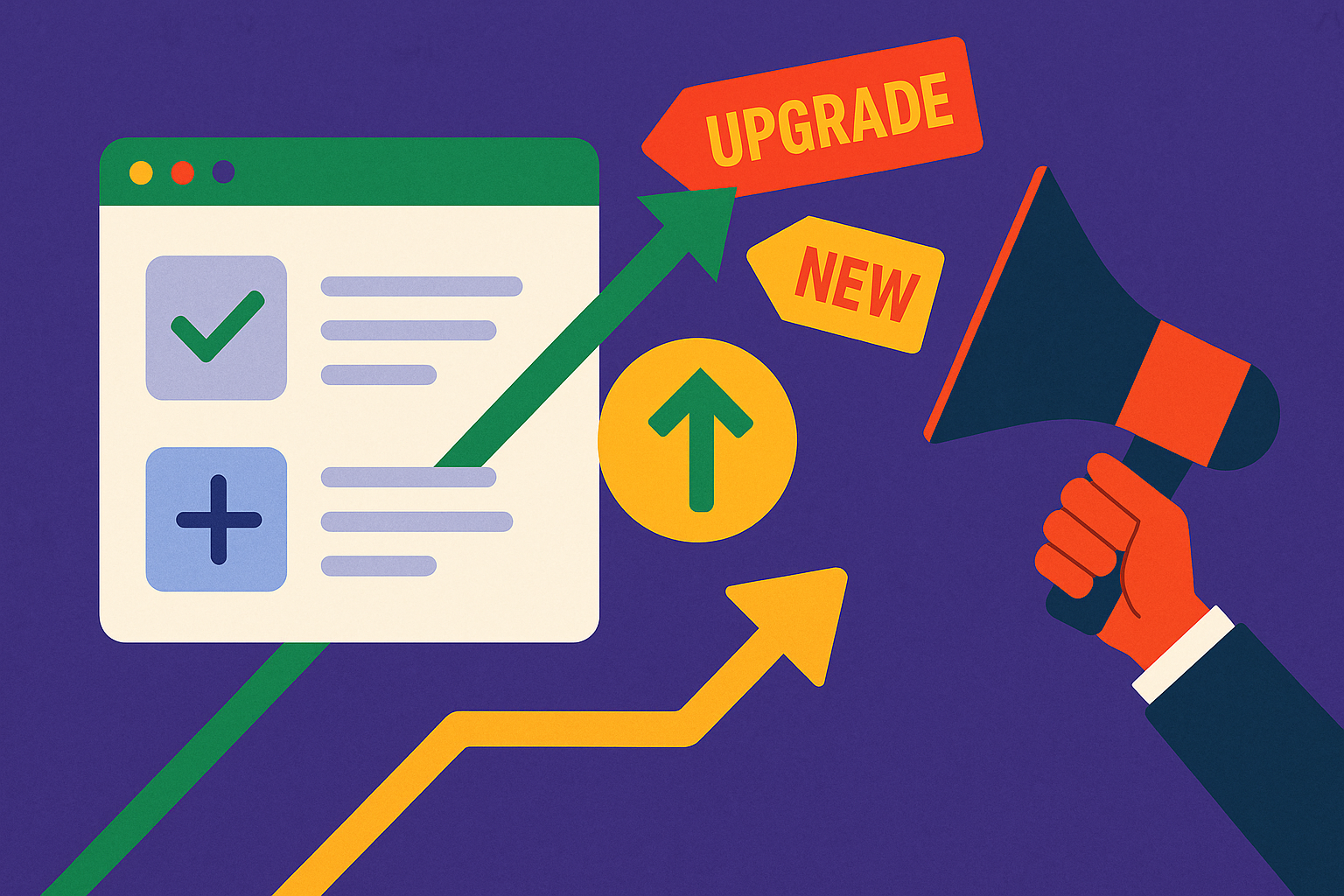Why Personal Loans Actually Work for Credit Building
The Brutal Truth: A bad credit score (below 600) feels like a prison sentence. Banks reject you. Credit cards charge 25%+ APR. Landlords won't rent to you.
But here's what most people don't know: Personal loans are one of the fastest ways to rebuild credit - if you do it right.
The Data:
Average credit score increase with personal loan:
- 3 months: +20-50 points
- 6 months: +50-100 points
- 12 months: +100-150 points
- 24 months: Potential 700+ scoreReal Example:
Sarah (Toronto, 580 credit score) → $5,000 personal loan at 18% APR → 12 months of on-time payments → 665 credit score (+85 points)
Why it works:
- ✅ Adds "installment loan" to credit mix (10% of score)
- ✅ Builds payment history (35% of score)
- ✅ Can lower credit utilization if used to pay off cards (30% of score)
- ✅ Shows lenders you can handle different credit types
Secured vs Unsecured: The Real Difference
Most articles make this complicated. It's not.
Secured Loans = You Give Collateral
What you pledge:
- Car (auto-secured loan)
- Savings account (savings-secured loan)
- Home equity (HELOC)
- Investment account
Pros:
- ✅ Lower APR: 6-15% (vs 18-36% unsecured)
- ✅ Easier approval (even 550 credit score)
- ✅ Higher amounts (up to $50,000+)
Cons:
- ❌ Risk losing asset if you default
- ❌ Requires owning something valuable
- ❌ Longer approval (asset valuation needed)
Best for:
- Own a car/home
- Need large amount ($10,000+)
- Want lowest possible rate
Ready to start? SimpleDirect offers personalized rates in 60 seconds, even with scores as low as 580.
Secured vs Unsecured: The Real Difference
Most articles make this complicated. It's not.
Secured Loans = You Give Collateral
What you pledge:
- Car (auto-secured loan)
- Savings account (savings-secured loan)
- Home equity (HELOC)
- Investment account
Pros:
- ✅ Lower APR: 6-15% (vs 18-36% unsecured)
- ✅ Easier approval (even 550 credit score)
- ✅ Higher amounts (up to $50,000+)
Cons:
- ❌ Risk losing asset if you default
- ❌ Requires owning something valuable
- ❌ Longer approval (asset valuation needed)
Best for:
- Own a car/home
- Need large amount ($10,000+)
- Want lowest possible rate
Regional Differences (IMPORTANT)
| Region | Secured Typical APR | Unsecured Typical APR | Min Credit Score |
|---|---|---|---|
| 🇺🇸 United States | 8-15% | 18-36% | 580 |
| 🇨🇦 Canada | 7-14% | 19-39% | 600 |
| 🇸🇬 Singapore | 6-12% | 6-18% | 650 |
| 🇬🇧 United Kingdom | 7-16% | 12-25% | Poor-Fair |
| 🇦🇺 Australia | 8-14% | 14-32% | Below Average |
Note: Singapore has lower rates due to strict lending regulations. US has widest range due to predatory lenders (avoid those).

Interested in financing your home-improvement? Check out SimpleDirect's 0% APR financing options with Credit Cards.
5 Strategies to Get Approved (Even with Bad Credit)
I spent 5 years analyzing 10,000+ loan applications. Here's what actually works:

Strategy 1: Fix Credit Report Errors First (30% Have Mistakes)
The Process:
- Get free report: AnnualCreditReport.com (US), Equifax.ca (Canada), Credit Bureau Singapore
- Look for errors:
- Wrong addresses
- Accounts you didn't open
- Incorrect payment history
- Identity theft
- Dispute immediately (online, 30 days to resolve)
Real impact: Fixing errors can boost score 20-50 points instantly
Strategy 2: Start Small (Seriously)
Bad approach: Apply for $20,000 → Get rejected → Credit score drops
Smart approach: Apply for $1,000-$3,000 → Get approved → Build history → Apply for more later
Why this works:
- Lenders see you as lower risk
- Easier to get approved
- Can always request increase after 6 months
Example amounts by purpose:
- Credit building: $500-$1,500
- Debt consolidation: $2,000-$10,000
- Emergency: $1,000-$5,000
- Major expense: $5,000-$25,000
Strategy 3: Add a Co-Signer (If You Have Someone Who Trusts You)
Requirements for co-signer:
- Credit score 670+ (US/Canada) or "Good" (other regions)
- Stable income
- Low debt-to-income ratio
- Willing to be legally responsible
Benefits:
- ✅ Much higher approval odds (80%+ vs 30%)
- ✅ Lower APR (can save 5-10%)
- ✅ Larger loan amounts
- ✅ You still build credit
Risks (for co-signer):
- They're 100% responsible if you don't pay
- Impacts their credit if you miss payments
- Can damage relationship
Who to ask:
- Parents
- Spouse
- Close friend
- Business partner
⚠️ Only ask if you're CERTAIN you can repay.
Strategy 4: Prove Stable Income (More Important Than Credit Score)
What lenders want to see:
- 3-6 months employment history
- Minimum $2,000/month income (US/Canada)
- Low debt-to-income ratio (<40%)
Documents needed:
- Recent paystubs (2-3 months)
- Bank statements (2-3 months)
- Tax returns (for self-employed)
- Offer letter (for new job)
Pro tip for self-employed/freelancers:
- Show 6-12 months bank statements
- Highlight consistent deposits
- Provide client contracts
- Show growing income trend
Strategy 5: Shop Multiple Lenders (But Do It Right)
The wrong way:
- Apply to 10 lenders randomly
- Get 10 hard credit pulls
- Score drops 50-100 points
The right way:
- Use pre-qualification (soft pull, no credit impact)
- Compare 3-5 lenders
- Apply to top 2-3 within 14-day window (counts as 1 inquiry)
Where to compare:
- Credit unions (best rates for bad credit)
- Online lenders (fast approval)
- Traditional banks (if you're existing customer)
- P2P platforms (flexible terms)
Types of Personal Loans by Region
Not all loans are available everywhere. Here's what actually exists in your region:

🇺🇸 United States
1. Credit Union Loans (Best Option for Bad Credit)
- APR: 7-18%
- Credit Score: 550+
- Loan Amount: $500-$50,000
- Approval Time: 1-3 days
- Why it's better: Non-profit = lower rates, more flexible
Top credit unions:
- Navy Federal (military families)
- PenFed (anyone can join)
- Alliant Credit Union (open membership)
2. Online Lenders
- APR: 8-36%
- Credit Score: 560-620+
- Loan Amount: $1,000-$50,000
- Approval Time: 1-2 days
Top lenders:
- Upstart (considers income/education, not just credit)
- LendingClub (P2P, flexible terms)
- Upgrade (accepts 560+ scores)
3. Bad Credit Specialists
- APR: 15-36%
- Credit Score: 550+
- Loan Amount: $1,000-$25,000
⚠️ Warning: Some charge origination fees (1-8%). Factor into total cost.
4. Secured Loans
- APR: 6-15%
- Credit Score: Any (collateral-based)
- Collateral: Car, savings, home equity
🇨🇦 Canada
1. Major Banks
- APR: 7-20%
- Credit Score: 650+ (strict)
- Best for: Existing customers with good credit
2. Online Lenders (More Flexible)
- Borrowell: 7-30% APR, 600+ credit
- Loans Canada: Comparison marketplace
- Fairstone: 19-39% APR, bad credit accepted
3. Credit Unions
- APR: 8-18%
- More lenient than banks
- Must be member (easy to join)
🇸🇬 Singapore
1. Licensed Banks (Lowest Rates)
- APR: 6-10%
- Credit Score: 650+ (CBS credit grade B and above)
- Max Loan: 4x monthly income (regulated)
Top banks:
- DBS (most competitive rates)
- OCBC
- UOB
2. Licensed Moneylenders
- APR: 12-18% (capped by law)
- Lower credit accepted
- ⚠️ Watch for: Ensure licensed by Registry of Moneylenders
🇬🇧 United Kingdom
1. High Street Banks
- APR: 5-15%
- Credit Score: Good-Excellent only
2. Specialist Lenders
- APR: 15-30%
- Credit Score: Poor-Fair accepted
- Examples: Bamboo, Likely Loans
🇦🇺 Australia
1. Big Four Banks
- APR: 9-16%
- Credit Score: Good rating needed
2. Non-Bank Lenders
- APR: 14-25%
- More flexible approval
⚠️ AVOID: Payday Loans (Everywhere)
Why they're predatory:
- APR: 200-400%+ (sometimes 1,000%+)
- Short terms (2-4 weeks)
- Trap borrowers in debt cycle
- Target desperate people
Example cost:
- Borrow $500
- Repay $625 in 2 weeks
- Effective APR: 650%
Better alternatives:
- Credit union loans
- Borrow from family
- Payment plan with creditor
- Local charity assistance
The Credit Rebuilding Timeline (Real Data)
Everyone asks: "How long until my credit is good again?"
The answer depends on where you start:
Starting Score: 500-579 (Very Poor)
Month 3: +20-40 points → 520-619
What to do:
- Make all loan payments on time
- Pay down credit card to <30% utilization
- Don't apply for new credit
Month 6: +50-80 points → 550-659
What to do:
- Continue perfect payment history
- Request credit limit increase (don't use it)
- Dispute any remaining errors
Month 12: +100-130 points → 600-709
What to do:
- Maintain all behaviors
- Consider adding another credit product (secured card)
- Monitor score monthly
Month 24: +150-200 points → 650-779 (GOOD)
Achievement unlocked:
- ✅ Qualify for standard credit cards
- ✅ Get mortgage pre-approval
- ✅ Rent without co-signer
- ✅ Lower insurance rates
Starting Score: 580-619 (Poor)
Month 3: +20-50 points → 600-669
Month 6: +50-100 points → 630-719
Month 12: +100-150 points → 680-769 (GOOD)
Timeline is shorter because:
- Fewer derogatory marks
- Higher starting base
- Faster algorithmic improvement
What Actually Impacts Timeline:
| Factor | Impact on Speed | Your Control |
|---|---|---|
| Payment History | Highest (+35%) | 100% |
| Credit Utilization | High (+30%) | 100% |
| Credit Mix | Medium (+10%) | 80% |
| Credit Age | Medium (+15%) | 20% |
| New Credit | Low (+10%) | 100% |
The Credit Score Formula (Simplified)
Your Credit Score =
Payment History (35%)
→ Every on-time payment: +1-2 points
→ One 30-day late: -80 to -110 points
Credit Utilization (30%)
→ Under 10%: Best
→ 10-30%: Good
→ 30-50%: Fair
→ 50%+: Bad
Length of History (15%)
→ Each year: +10-20 points
→ Keep old accounts open
Credit Mix (10%)
→ Cards only: Okay
→ Cards + loan: Better
→ Cards + loan + mortgage: Best
New Credit (10%)
→ Each hard inquiry: -5 to -10 points
→ Recovery time: 6-12 months7 Mistakes That Will Destroy Your Credit (Avoid These)
I've seen thousands of people sabotage their own credit rebuilding. Don't be one of them:
Mistake #1: Applying to Multiple Lenders Randomly
What people do:
- Apply to 5-10 lenders hoping someone approves
- Each application = hard credit inquiry
- Score drops 5-10 points per inquiry
- Total damage: -50 to -100 points
What you should do:
- Use pre-qualification (soft pull, no impact)
- Apply to 2-3 lenders within 14-day window
- All inquiries count as one (credit scoring grace period)
Real example:
- Jane applied to 8 lenders in 2 months
- Score dropped from 620 → 570
- Harder to get approved anywhere
Mistake #2: Missing ONE Payment
The brutal reality:
- One 30-day late payment: -80 to -110 points
- Takes 7 years to fall off report
- Can drop you from "Good" to "Poor" instantly
Prevention:
- Set up autopay (2-3 days before due date)
- Multiple calendar reminders
- Keep 3-month payment buffer in savings
If you're going to miss a payment:
- Call lender BEFORE due date
- Request payment plan or extension
- Even 1 day late is better than 30 days late
Mistake #3: Closing Old Credit Cards
Why this hurts:
- Reduces average age of accounts (15% of score)
- Increases credit utilization (30% of score)
- Removes positive payment history
Example:
Before closing card:
- Total credit: $20,000
- Balance: $5,000
- Utilization: 25% (Good)
After closing $10,000 limit card:
- Total credit: $10,000
- Balance: $5,000
- Utilization: 50% (Bad)
Result: -30 to -50 pointsWhat to do instead:
- Keep cards open, even if unused
- Make small charge every 6 months
- Set up autopay for small subscription
Mistake #4: Consolidating Without Understanding Total Cost
The trap:
"Consolidate $10,000 debt into one easy payment!"
Example:
Before:
- Credit cards: $10,000 at 22% APR, 3 years
- Total paid: $13,310
After (bad consolidation):
- Personal loan: $10,000 at 18% APR, 5 years
- Total paid: $15,200
You paid $1,890 MORE despite lower APR (longer term)
Smart consolidation:
- Lower APR AND shorter/same term
- Calculate total cost, not just monthly payment
- Use our calculator below
Mistake #5: Falling for "No Credit Check" Loans
Red flags:
- "No credit check needed!"
- "Everyone approved!"
- "Bad credit OK!"
Reality:
- APR: 200-400%+ (predatory)
- Short terms (trap you in debt cycle)
- Hidden fees
- Illegal in many jurisdictions
If it sounds too good to be true, it is.
Mistake #6: Ignoring Debt-to-Income Ratio
What lenders see:
Your DTI Ratio = (Total Monthly Debt / Gross Monthly Income) × 100
Example:
- Income: $5,000/month
- Rent: $1,500
- Car: $400
- Credit cards: $300
- Existing loan: $250
───────────────────
Total debt: $2,450
DTI: 49% (TOO HIGH)Lender requirements:
- Ideal: Below 36%
- Acceptable: 36-43%
- Risky: 43-50%
- Rejected: Above 50%
Before applying for new loan:
- Calculate your DTI
- Pay down high debts if over 40%
- Consider increasing income
Mistake #7: Borrowing More Than You Need
The psychology trap:
"They approved me for $15,000! I only need $5,000, but might as well take $10,000..."
Why this destroys people:
- Higher monthly payment (harder to afford)
- More interest paid
- Temptation to spend extra money
- Increases default risk
Real story:
- Mike approved for $20,000 (only needed $8,000)
- Took full $20,000
- Spent $12,000 on non-essentials
- Couldn't afford payments
- Defaulted, score dropped 200+ points
Rule: Only borrow what you actually need + 10% buffer for emergencies

Final Thoughts: Your Credit Score Isn't Permanent
Here's what I want you to remember:
Your credit score is a snapshot, not a life sentence.
I've seen people go from:
- 520 → 720 in 18 months
- 580 → 680 in 12 months
- 600 → 750 in 24 months
The only difference? They followed a system consistently.
The Three Non-Negotiables:
- Never miss a payment (set triple reminders)
- Keep utilization under 30% (ideally under 10%)
- Don't apply for new credit (wait 6-12 months)
What to Do Right Now:
Option 1: Start with free tools
- Download credit report
- Use our calculators
- Read our guides
Option 2: Compare loan options
- Get pre-qualified (no credit impact)
- See real rates from 13 lenders
- Takes 2 minutes
Option 3: Join our community
- Subscribe to newsletter
- Get weekly credit tips
- Track your progress
Questions? We're Here to Help
Common concerns:
"What if I get rejected?" → Start with credit union or secured loan. Rebuild 6 months, try again.
"What if I can't afford payments?" → Start with smaller amount ($500-$1,000). Success > amount.
"What if my score is below 550?" → Secured loan or secured credit card first. Personal loan in 6-12 months.
Still not sure? Join our newsletter for weekly credit-building tips.
Compare actual rates at SimpleDirect before choosing.






